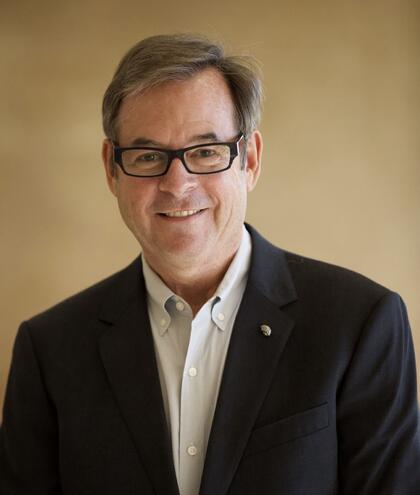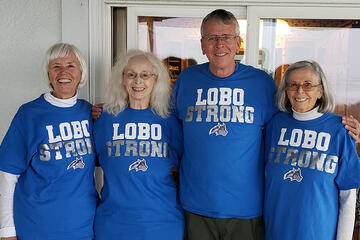From the time I was a kid, I was fascinated by the brain. Not because I wanted to be a scientist but because I wanted to understand myself.
I didn't talk until I was 5. For a long time, I was misdiagnosed by school psychologists who referred to my "condition" as verbally delayed (although the actual term they used was a lot less kind). It was confusing, isolating. I think I became interested in how the brain works because I wanted to know why I was different. I wanted to know what makes us who we are.

Image caption: Rick Huganir
In high school, I was obsessed with learning and memory. I knew early on that memory is identity. It creates us, defines our personalities, helps us make decisions, grow, and love.
So, for a high school science project, I ran an experiment. I trained goldfish to learn to swim to a target and then—in a rudimentary and definitely unrepeatable procedure— I extracted brain material from a "smart" goldfish and injected it into another fish to see if I could transfer the memory.
Spoiler: It didn't work.
But I was hooked. That experiment led me to chemistry, then neurochemistry, and eventually to decades of research studying how the brain changes chemically, structurally, and functionally when we learn. My students, postdoctoral fellows, and I have spent years identifying the molecules, genes, and proteins that are essential to learning and memory. We've worked on these molecules in cells in a dish as well as in mice and rats, animal models that have helped us expand our understanding of something so fundamental for brain function.
This basic science is often invisible, but it's the foundation of everything science eventually does to help people. It's slow. It's quiet. But it matters.
Then, in 2009 I read a paper that changed the trajectory of my career— and my life.
A gene I had been studying for years, SYNGAP1, which we showed was important in learning and memory in mice, turned up in a place I never expected: in a clinic. Doctors had found mutations in SYNGAP1 in several children that led to severe intellectual disability, autism, and epilepsy. And over time, with the publication of many additional clinical studies, it became clear that these mutations were not rare. SYNGAP1 mutations are now known to underlie 1% of all intellectual disability, affecting tens of thousands of children around the world.
I realized that something I had been studying in rats and mice for years was now key to understanding a devastating condition in children. My life's work had crossed a bridge—from the bench to the clinic.
So, we began to expand our focus. My lab launched a translational program—no longer just to understand learning and memory in theory but to cure SYNGAP1-related disorders.
I started meeting the families of the SYNGAP kids, the "SYNGAPians." The young children are beautiful. Playful. Many are diagnosed early, but as they grow, their language doesn't develop beyond a few words. Their behavior becomes harder to manage. I watch their parents—fierce, loving, exhausted. They carry an impossible weight every single day, hoping for an answer, an effective treatment.
For so long, these families had no explanation. Now they have a diagnosis—but no cure. Not yet.
But the truth is, we are close. Science has moved fast. Advances in genetic medicine now make it realistic to think about curing this disease. In the last few years, we and other labs around the world have developed tools that could correct the genetic mutation at the root of SYNGAP1 disorder. What was once science fiction is now science.
This should be a story of hope—of what humanity can do when we invest in each other.
But instead, it's become a story of uncertainty.
Just as we are approaching success, federal funding for this work is vanishing. Under the new administration, the National Institutes of Health, which for more than 75 years has supported scientists who are pursuing research deemed to be in our national interest, is pulling back. Budgets are being slashed. Labs like mine, working toward treatments that could transform thousands of lives, are forced to shut down projects, turn away talent, and walk away from cures within reach.
It's not abstract. It's not academic. This is real. This is happening now. And it is crushing.
I think often about those children and their parents. I think about my younger self, the boy who didn't speak, who might've been written off. What would've happened if someone hadn't believed in his potential?
That's the power of science. It's not about facts and experiments. It's about making people's lives better.
We pay for what we value.
If we let this work disappear, we are not just losing research—we are turning our backs on families who have already waited too long. We are erasing decades of effort and the hope of a generation.
I still believe in what science can do. I have seen it change lives.
Now we need the courage and the will to fight to finish what we started.
Posted in Health, Voices+Opinion
Tagged neuroscience, nih funding, research funding









